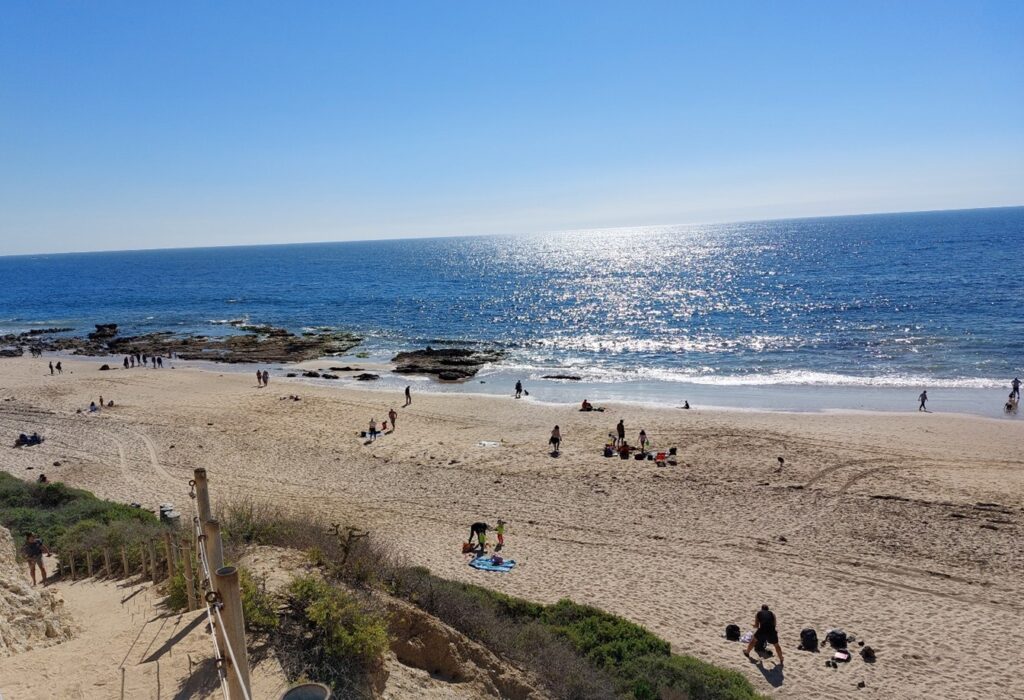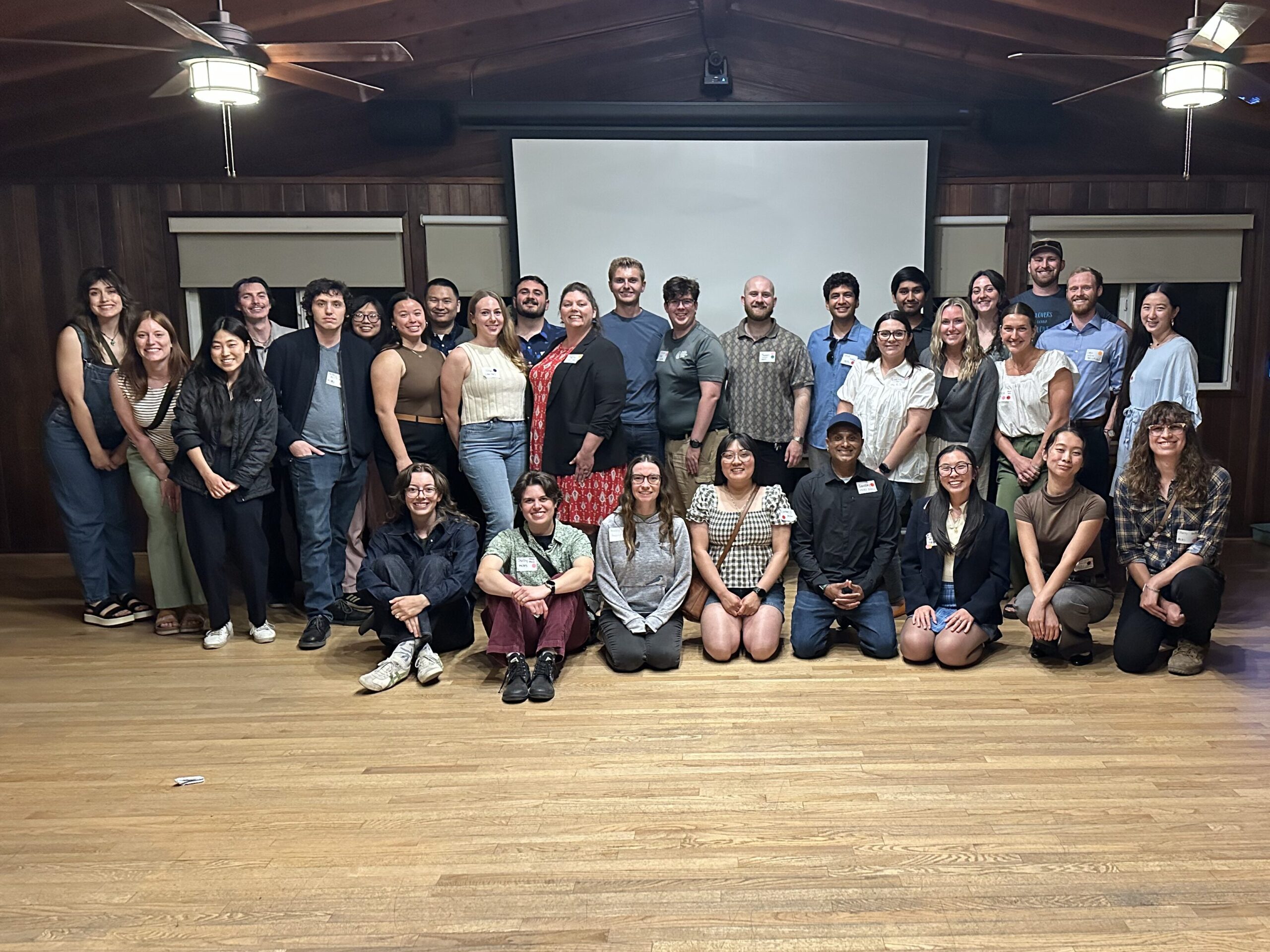Student Blog: Tarynn Kimmick

The Power of Curiosity
At the beginning of my second year of the MCRS program when my capstone team was beginning to weave together our project, I expected that the outreach and education aspect of our goals would be accomplished through creating educational resources for our community partner. To my surprise, what became the core of our outreach wasn’t that, but our field days at Crystal Cove State Park! Days where thought I would only speak to my teammate and collect data on piles of seemingly endless marine plants and algae that washed ashore (beach wrack), became days where I was able to educate and engage. Through this, I realized I had seriously underestimated the power of curiosity, and the impact someone could have when they least expected to.
Our study took us throughout the park every week, where we would conduct surveys and sift through the wrack that fell within the boundaries of our study area for the day. During this time, we met so many different people. Lifeguards on duty driving their trucks, old couples enjoying a morning walk on the beach, tourists tide pooling, teenagers hanging out with their friends, professors on their day off, fishermen on shore, a bible study group, parents with their kids, people from all walks of life stopped us to ask questions. I’ve done plenty of outreach over the years, however this was a very different scenario from what I was used to. In the past, I was always teaching at events where all the people there were those who were already interested in learning about a certain topic or were obligated to learn. But out on the beach at Crystal Cove State Park, it was pure curiosity that drove those there to seek answers to their questions. While some had just a passing curiosity that was quickly satisfied with a few sentences, others became even more interested in what we were doing.
Over time, we developed a script for these instances. We would discuss how the beach wrack was a valuable resource to the beach ecosystems, for both the invertebrates and shorebirds, and why it was harmful to remove it. With many of the invertebrates on sandy beaches living their entire life in the sand and unable to move elsewhere, having beach wrack as a source of food and habitat becomes vital to their existence. By extension, this then becomes a valuable food source for both shorebirds, as well as other kinds of local birds that live nearby. Monitoring beach wrack is not just important as a resource, but also helps us understand what is happening offshore with invasive species that are increasingly becoming a problem in California’s waters.
While this is not new information to me, the reactions from some of those that I talked to was quite impactful. Hearing how many questions people had about the project and the science, as well as hearing from some that they had never considered wrack to be important before talking to us, was an extremely fulfilling experience. It was even more fulfilling when a couple who stopped us again after having spoken with us earlier in the day, let us know that they had picked up as much trash as they could fit in their pockets after our conversation about the amount of trash we find during our surveys. What we had said had enough of an impact for them to act on what they had learned.
This opened my eyes to the fact that despite there being huge differences in background between all the people I spoke to, curiosity drives us all. I was pleasantly surprised many times by how eager people were to learn. Curiosity is what drove me to study science, and being able to impart knowledge and inspire curiosity for the same science I am passionate about, boosted my motivation for my research and my dedication to this career. From all of this, I want to impart the importance of education, communication, and inspiration, as you never know where one’s curiosity may lead them.
Citations
Defeo, O., McLachlan, A., Schoeman, D., Dugan, J., Jones, A., Lastra, M., & Scapini, F. (2008). Threats to sandy beach ecosystems: A review. Estuarine Coastal and Shelf Science, 81. https://doi.org/10.1016/j.ecss.2008.09.022
Dugan, J., Hubbard, D., McCrary, M., & Pierson, M. (2003). The response of macrofauna communities and shorebirds to macrophyte wrack subsidies on exposed sandy beaches of southern California. Estuarine, Coastal and Shelf Science, 58, 25–40.
Dugan, J., Hubbard, D., Page, H. M., & Schimel, J. P. (2011). Marine macrophyte wrack inputs and dissolved nutrients in beach sands. Estuaries and Coasts, 34(4), 839–850. https://doi.org/10.1007/s12237-011-9375-9
Hubbard, D. M., Dugan, J. E., Schooler, N. K., & Viola, S. M. (2014). Local extirpations and regional declines of endemic upper beach invertebrates in southern California. Estuarine, Coastal and Shelf Science, 150, 67–75. https://doi.org/10.1016/j.ecss.2013.06.017



